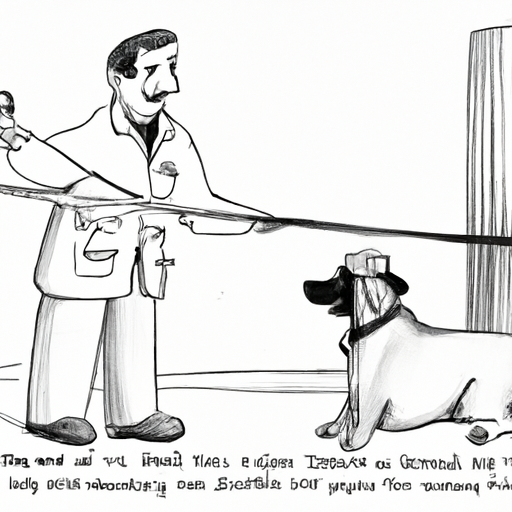1. Why Measuring Your Dog’s Height is Important
You might be wondering why you would need to measure your dog’s height. Well, it’s not just about knowing if your beloved pet is growing healthily – it’s also about ensuring that their environment is suitable and safe for them.
For instance, the height of your dog can determine the size of crate they need or the height of fence they can jump over. Additionally, specific breeds have standard height ranges, and knowing your dog’s height can help you ensure they’re on track for their breed’s standard.
2. What You’ll Need to Measure Your Dog’s Height
When it comes to measuring your dog’s height, you don’t need anything fancy. Here’s what you’ll need:
- A measuring tape or a yardstick
- A flat wall
- A level (optional)
Now that you have your tools ready, let’s get onto the steps.
3. How to Measure Your Dog’s Height
Here’s a simple step-by-step guide on how to measure your dog’s height:
-
Find a flat wall: First and foremost, you need a flat wall. It’s important because you want to ensure the measurement is as accurate as possible.
-
Get your dog to stand against the wall: This might take a bit of coaxing, especially if your dog isn’t used to it. Use treats if necessary!
-
Make a mark on the wall: Once your dog is standing straight, make a mark on the wall at the level of your dog’s shoulder blades. This is known as the withers and is considered the correct place to measure a dog’s height.
-
Measure from the floor to the mark: Use your measuring tape or yardstick to measure from the floor to the mark you made.
And there you have it! You’ve measured your dog’s height.
4. Common Mistakes to Avoid
When measuring your dog’s height, you want to avoid these common mistakes:
-
Measuring at the wrong place: Remember, you should measure at the withers, not at the top of the head.
-
Not having your dog stand straight: Your dog should be standing straight and looking forward. If they’re slouching or sitting, it can affect the accuracy of the measurement.
-
Using a flexible measuring tape: A yardstick or a rigid measuring tape is more accurate as a flexible tape can curve and give incorrect measurements.
5. Frequently Asked Questions
Q: How often should I measure my dog’s height?
A: It depends on the age of your dog. Puppies grow quickly, so you might want to measure their height every couple of months. For adult dogs, once or twice a year should be enough.
Q: Can I measure my dog’s height by myself?
A: Yes, but it might be easier if you have someone else to help you, especially if your dog is not used to standing still.
Q: How can I get my dog to stand still?
A: Use a treat or a toy to get their attention. If your dog is still having trouble standing still, you might want to consider training them to stay.
In conclusion, measuring your dog’s height is a simple and important task that you can easily do at home. It can give you valuable insights into your dog’s growth and health, and ensure their environment is safe and suitable for them.



